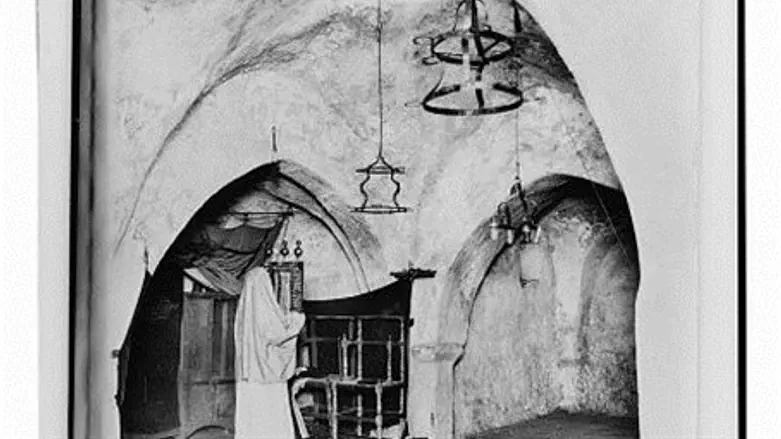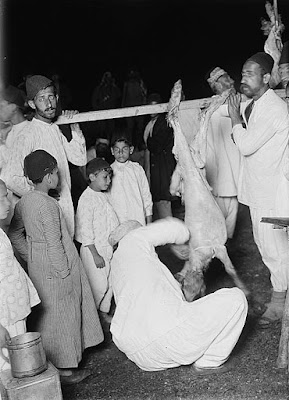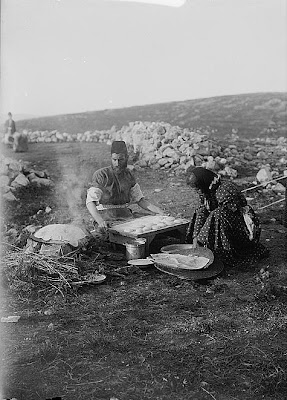
Samarian high priest Yitzhak ben Amram ben Shalma ben Tabia (circa 1900). View other pictures of priests here.
The Samaritan population in the Land of Israel numbered more than a million people 1,500 years ago, according to some estimates. This ancient people lived in northern Israel and claimed to have been descendants of those tribes of Israel which were not sent out into the Babylonian exile. One line of Samaritans traces their lineage back to Aaron the priest, and they consider their "holy mountain" to be Mt. Gerizim outside of Nablus (Shechem) -- not Jerusalem.
Samaritan family (1899)
The Samaritans worship the God of Abraham, revere a scroll comparable to the five books of Moses, and maintain Passover customs, including the sacrifice of the Pascal Lamb. The photographers of theAmerican Colony photographed dozens of pictures of the Samaritans' sacrificial service.
Samaritan synagogue in Shechem (1899). Etching above.
Jews ceased the Passover sacrifice with the destruction of the second Temple.
Already in Talmudic days, Jewish authorities rejected the Samaritans' claims to be part of the Jewish people. The Cutim, according to rabbinic authorities, arrived in the Land of Israel around 720 BCE with the Assyrians from Cuth, believed to be located in today's Iraq.
Over the millennia, the Samaritans almost disappeared. Persecuted, massacred and forcibly converted by Byzantine Christians and by Islamic authorities, the Samaritans' community today numbers fewer than 1,000 who are located on Mount Gerizim near Nablus (Shechem) and in Holon, Israel.
Baking matza on Mt. Gerizim (circa 1900)
This year, the Samaritans will celebrate their Passover on April 20, 2016.
Preparing a lamb (1900)
"The prepared carcasses ready for the oven" (1900)
According to Samaritan officials, on January 1, 2015, the Samaritans number 777 souls.
Praying on Mt. Gerizim (1900)





